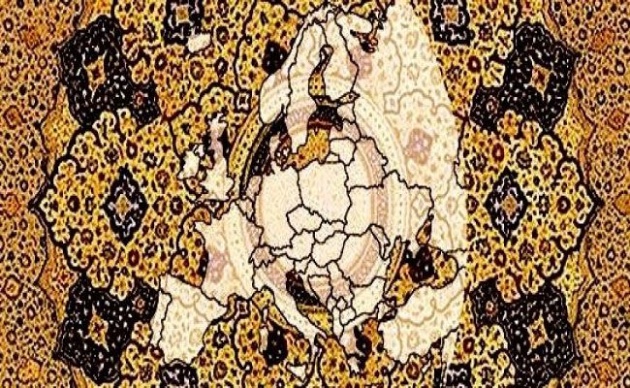
“But the work of Man is only just beginning, and it remains to conquer all the violence entrenched in the recesses of our passion and no race possesses the monopoly of beauty, of intelligence, of force. And there is a place for all at the rendezvous of victory” Aime Cesaire
As angry public sentiment against the refugees grows louder in Europe with the expressed fear that Muslim migrants are eroding European traditions, it exacerbates the volatile environment loaded with Islamophobia. This certainly is a political reality that cannot be ignored. It also gives rise to several concerns and questions: Is the current situation fermenting for a bigger clash? How to avert, and prevent it from spreading further? Dr. Akbar S. Ahmed, a renowned scholar, and Chair of Islamic Studies at American University, responds to the current crisis through his Journey into Europe, a documentary that seeks to understand, explain and provide a resolution for the religious and ethnic conflict that is threatening peace and security in Europe.
The documentary is based on the research project Dr. Ahmed is conducting to study relations between West and the Muslim world, and treats the subject matter in a scholarly manner. It tries to comprehend the conflict through the intellectual discourse; by questioning the Clash of Civilizations paradigm in the beginning of the documentary, amidst the scenes of burning mosques, and rallies against Muslims. “Are we seeing a clash of civilizations? Or, is this just a clash of religion and culture? Does this represent the voice of the majority of European population or we see Europe stands divided?” The gist of the documentary however, remains on building bridges, fostering better understanding and easing the tensions between Islam and the West by creating a dialogue for peaceful coexistence, interfaith harmony, and preserving diversity. It also identifies, and suggests solutions for the challenges posed to the Muslim community with respect to interfaith harmony. To study the phenomenon, the documentary conducts extended research and gathers facts and figures from across Europe, from the cross section of the population (Christians, Jews, Muslims, voices and opinions of scholars as well as ordinary people) and reflects opposing positions of those who do respect and advocate for the preservation of diversity and those who don’t.
Dr. Ahmed does not appear to be an alarmist or a pessimist, as he gauges the current situation. Based on his research and knowledge of history he sees great potential for a dialogue.
Making an effective use of evidence generated from empirical study, Journey into Europe, helps answer several quarries, and suggests solutions for easing of the tensions currently wreaking havoc in Europe. It reveals a side that indicates the presence of a mindset inclined to clash of civilizations, though it does not fully support or corroborate with the central Idea of Huntington’s thesis. This mindset, as it transpires from the documentary, could potentially escalate the clash if keeps on growing like the recent rise of right wing movements and political parties across Europe. “Islam can be very difficult to integrate into what we call a modern Western civilization,” says the Deputy Chairman of the Danish People’s Party in a clip. On the other hand, the opinion in Europe vis-à-vis Muslims seems to be clearly divided. There are those who argue that “Muslims are the part of Europe and we are reducing them to their religious identities which is totally wrong.” Two scenes from the documentary can be taken as example of effective depiction of diverse views. One about a media icon whose Muslim Identity becomes a barrier for her career, she says “I was an award winning popular media icon but suddenly I was accused of being supporter of terrorism,” In contrast to this, there is a beautiful glimpse from a soccer ground where one Muslim team member after scoring the decisive victory goal touches the earth with his forehead in prostration, a Muslim way to praise and thank God. He gets hugs and kisses from his teammates and nobody seems to care about his Muslim Identity.
The documentary proposes a reconstruction and resumption of a dialogue between Islam and West that in the past, helped in shaping Europe’s cultural identity especially through the Renaissance. Reminding the historical significance of this dialogue and presenting its major features the documentary successfully establishes symbiotic nature of intra civilizational relations coupled with the preservation of differences, interfaith harmony and peaceful coexistence
To assess the role of Islam in Europe, the documentary travels through the past into present, not just with the camera, but also with the voices of religious figures, intellectuals and scholars who shared their views on the contribution of Islam to the West. In the historical period, the documentary unfolds the era of the Muslim reign in Europe when Christians, Muslims as well as Jews peacefully coexisted for many centuries in cosmopolitan Islamic Spain and elsewhere in Europe. The Muslim period in Spain, often described as a ‘golden age’ of learning, when Muslims and non-Muslims contributed to the progressive development of Europe in the areas of literature, poetry and architecture has been featured beautifully in the documentary. The period of Muslim rule in Spain (c.650–1500) is also referred to as La Convivencia (the Coexistence) in Spanish history.
Sailing through various periods of history where Muslim contribution remained significant in Europe, the film has taken into account the post World War II period when Muslims from Asia, Africa and Turkey joined hands for the industrial and economic expansion of Europe, though not as the rulers this time, but as skilled labors in the factories as workers, and professionals.
The documentary identifies interfaith harmony as a remedy to counter religious and cultural clash in Europe and highlights challenges to interfaith harmony from right wing movements and parties across Europe like the Danish People’s Party. A conversation with the Cultural Editor of the Danish newspaper who commissioned the cartoons of Prophet Mohammad and with Deputy Chairman of Danish People’s Party reveal their perceptions about Islam as incompatible with Democracy. Another challenge the Muslim community faces comes from within, the competing claims of the extremist narrative associating Islam with terrorism and fanaticism, which entails an urgent need to challenge and counter this account from our mosques and Imams. At the same time, voices of leaders from different faiths who advocate for interfaith harmony need to get much louder. These efforts will promote better understanding and lead towards the path of integration.
Journey into Europe is a project on a broad canvas. It transcends the boundaries with respect to geography, population, and disciplinary approaches to study the phenomenon of religious and cultural clashes in the world today. It incorporates references to and discussions on terrorism, multiculturalism, migration, and human rights. The timing is very important and it is being screened at a critical juncture when not only Europe but in the multicultural society of United States, Islamophobia echoes in the Presidential election campaigns. The key message of the documentary stresses for a dialogue between Islam and the West to continue with a new global mentality. It will hopefully work to keep America as multicultural as it is, and bring peace in Europe.



